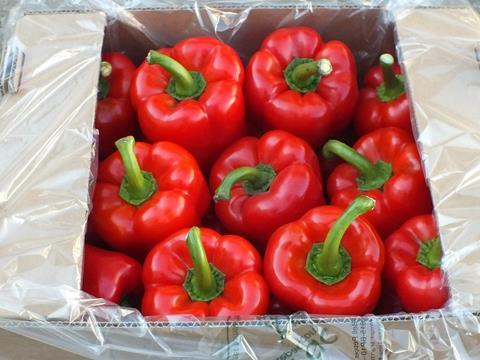
Gary Ward, Ph.D. Technical Development Manager. StePac Israel, part of Johnson Matthey PLC UK, discusses the latest trends driving Modified Atmosphere Packaging and its many benefits.
Promotion of healthy eating and increasing world population are driving global transactions and consumption of fruits and vegetables; efforts to make the transactions cost effective, reduce supply chain waste and carbon footprint are driving the increased use of MAP technology to preserve and extend fresh produce shelf life. Successful implementation of MAP necessitates a holistic approach that comprises an understanding of postharvest pathology, physiology, cold chain logistics and the interaction of these factors with packaging design.
MAP is a proven, high-performance fresh produce packaging technology designed to preserve freshness and good appearance, inhibit decay, extend storage and shelf life, and ultimately reduce waste within the supply chain.
Fresh fruits and vegetables continue respiring (breathing) after harvest. During the respiration process, the fresh fruits and vegetables consume oxygen (O2) in order to derive energy for driving cellular processes and emit carbon dioxide (CO2), heat, and water vapor. Storage life of fresh fruits and vegetables is inversely correlated with respiration rates, i.e., the higher the respiration, the more perishable the produce and vice-versa. This is the underlying reason why produce with high respiration rates, such as broccoli, asparagus, mushroom, spinach and sweet corn, have a much shorter shelf life than those with low respiration rates such as nuts, dates, apple, citrus, grape, onion and potato.
Lowering temperature reduces respiration rate and extends storage, but is also well known that a reduction in O2 and an increase in CO2 concentrations and the generation of a so-called modified atmosphere, slows respiration rates of many fresh produce items and inhibits the biosynthesis and action of the plant hormone ethylene, responsible for aging and - ripening processes. If the produce tolerates high CO2 concentrations a fungi-static effect can also be achieved, inhibiting fungal growth.
Successful implementation and sustained success of MAP is highly dependent on numerous factors:
• Choosing produce varieties that respond well to MAP.
• Good cultivation and harvest practices that lead to the highest possible quality and storability.
• Sorting and grading of the highest quality produce to pack.
• Prompt cooling to the optimal storage temperature. It is critical to use the most suitable cooling technique for the produce in question, with the ultimate aim of cooling the produce as quickly as possible and minimizing weight loss.
• Good temperature management throughout the supply chain, including ongoing monitoring and mapping of temperature, can - optimize the cold chain.
• Proper disease management during cultivation and post-harvest. If produce is washed after harvest, then it should be in disinfected water to prevent cross-contamination and thoroughly dried afterwards. Approved fungicides are often recommended in order to supplement the packaging in reducing the risk of microbial decay.
• Advanced packaging - designed to provide optimal modified atmosphere and yet tolerant to temperature fluctuations; inevitable in most supply chains.
• Condensation control of well-designed MAP -also manages the humidity inside the packaging. As produce respires, relative humidity inside the packaging increases, and at equilibrium, will be close to saturation. Condensed water on the surface of fruits and vegetables can adversely affect the gas exchange of the produce, leading to an unfavorable internal atmosphere. The most noticeable effect of condensation is accelerated microbial growth and subsequent decay. Selection of a film with a suitable Water Vapor Transmission Rate (WVTR) that takes into consideration the supply chain length and sensitivity to excess moisture and dehydration is critical.
• Good box design that enables unimpeded air flow from one side of the pallet to the other.
More info:
















